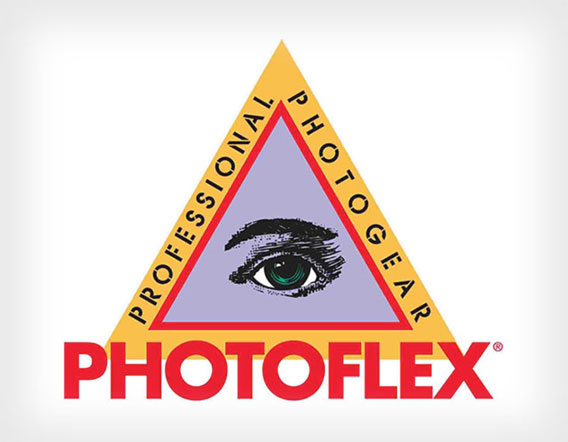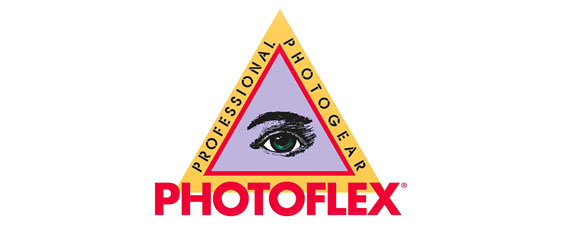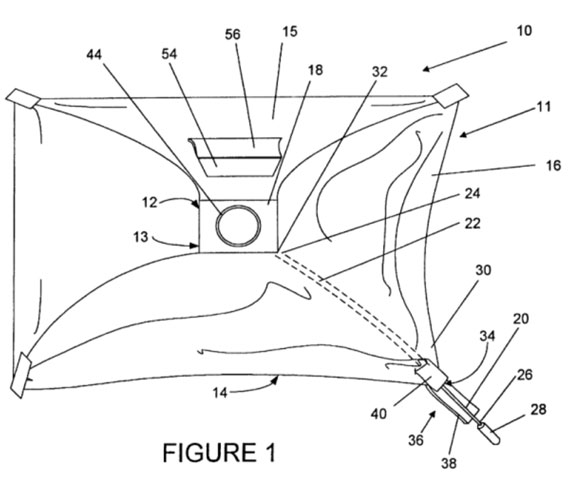Did Photoflex Fall on Hard Times Because of Softbox Litigation?
Darkness Falls on Photoflex
Photoflex, a well-known American manufacturer of photographic lighting equipment announced that it was closing its business by posting a notice on its website on March 31, 2015. Because of the timing of the announcement, some thought it might have been an April Fools hoax, but it was not. Others have reported that the company’s website refers inquiries to a email address that is linked to a law firm that specializes in bankruptcy. I searched the federal court records today, but did not find any papers filed by Photoflex regarding bankruptcy, but what I did find was that in recent years Photoflex has been filing lawsuits to try and enforce its softbox patent against other photo equipment companies.  Why Photoflex closed its doors has not been reported with any specificity, and I am only speculating and reading between the lines here, but I suspect that lots of company resources were diverted to litigating the patent infringement cases and that there was no corresponding financial gain. Patent enforcement litigation against a patent infringer is not something that tends to improve the cashflow of the patent-holding company, because the legal fees are incredibly expensive and it diverts not only the company’s money, but management’s attention, away from research and development of new products.
Why Photoflex closed its doors has not been reported with any specificity, and I am only speculating and reading between the lines here, but I suspect that lots of company resources were diverted to litigating the patent infringement cases and that there was no corresponding financial gain. Patent enforcement litigation against a patent infringer is not something that tends to improve the cashflow of the patent-holding company, because the legal fees are incredibly expensive and it diverts not only the company’s money, but management’s attention, away from research and development of new products.
Brief History of the Modern Collapsible Softbox
Established in 1985, Photoflex produced a multitude of light reflectors, modifiers and other photo studio lighting equipment. Photoflex manufactured a line of softboxes under their LiteDome trademark, and competed with many other manufacturers, including Chimera (sponsor of STC, that first produced what we all recognize as the modern collapsible softbox in 1980). 
The Photoflex ‘935 Softbox Patent
Eugene Kester founder of Photoflex, patented the Rapid Assembly Photographic Lighting Dome (Patent # 6,076,935) in 2000. Anyone that has ever struggled to bend and insert softbox rods into a speedring can appreciate the usefulness of the Photoflex ’935 patent. Kester’s invention was to allow the tips of the rods to extend beyond the front edge of the softbox during assembly so that there is less tension or bending force on them, and then once all of the rods are inserted into the speedring each rod is tensioned by pushing it backward in the sleeve toward the speedring and then folding over a velcro retaining tab to hold it in place.
“An advantage of the present invention is that … the retaining tabs at each corner of the housing can be easily fastened or released while the support rods are under tension… and the retaining tabs allow a controlled application and release of spring tension to the support rods, allowing for improved control.”
Photoflex Patent Infringement Litigation
Photoflex first sued Amvona (Circa 3, LLC) in 2004 for patent infringement of its LiteDome softboxes, which Photoflex alleged were being knocked-off by Amvona in China and sold on Amvona’s US-based internet website. (I admit that the first octabox that I bought was from Amvona because of its low price). The Amvona lawsuit ended in a 2006 judgment in favor of Plaintiff Photoflex, where Amvona was to pay a total of $50,000 to Photoflex. While that may sound like a victory, it probably wasn’t because the court ordered that the $50,000 “shall include all costs and attorney’s fees otherwise recoverable [by Photoflex] in this action.” I don’t know for a fact, but I suspect that Photoflex spent more than $50,000 in attorney’s fees on two-years-worth of patent litigation.
Tables Turn Against Photoflex
Amvona turned the tables against Photoflex, and sued them for having made defamatory statements and press releases against Amvona. In February 2013, Amvona won a $100,000 settlement from Photoflex; however, at the time of the settlement Amvona had already stopped selling photographic equipment on the internet in 2010. Amvona pledged to donate the $100,000 it received from Photoflex to charity.
Photoflex Goes After Other U.S. Competitors
Just before Photoflex had to pay the $100,000 settlement to Amvona, Photoflex filed a lawsuit in 2012 against Gradus Group, LLC (a New York company) for infringement of the ‘935 patent. Photoflex entered into a confidential settlement with Gradus in January 2013. About a year later, Photoflex sued CowboyStudio (a Texas company, and prolific internet and eBay seller of discount lighting equipment) in December 2013, and entered into a stipulation for voluntary dismissal of the case in May 2014, where both sides would bear their own attorney’s fees and costs. Because of the confidential settlements and stipulations to voluntarily dismiss the cases against Gradus and CowboyStudio, its impossible to say with certainty if Photoflex obtained any positive economic gain from the lawsuits to enforce its softbox patent.
Photoflex Sues Chinese Knock-Offs
Finally, Photoflex sued Shenzhen Nice Photographic Equipment Company Ltd. (a Chinese manufacturer) in December 2013, which went nowhere because Photoflex was unsuccessful in dragging the Chinese manufacturer into court. Photoflex threw in the towel and decided to dismiss the case in September 2014.
Do Patents Stifle Innovation?
It’s clear that Photoflex gained nothing from suing the Chinese manufacturer, and I wonder why they bothered. When the molds for Paul C. Buff’s popular 16-rib PLM parabolic umbrellas were ripped-off by his Chinese contract-manufacturers in 2009, Buff realized that it would be nearly impossible to sue and win against a Chinese defendant (he posted a long statement about this on his Blog detailing the situation at the time). So instead of suing in court, Buff decided to innovate and create a better version of the PLM that would be better than the knock-offs of his original design. Bravo Paul, and may you rest in peace… I think Paul C. Buff had the right idea, when his original idea was good enough for the competition to want to rip it off, he decided to counter-attack by making his next product even better than the first.
Are Patents an Asset or Liability?
Strictly speaking from a legal and accounting point of view, a patent is a valuable asset on the company’s balance sheet. Photoflex decided to respond to the competition’s unlawful use of their ‘935 patent “asset” by going to court to protect it. This almost certainly made their attorneys very wealthy during their decade-long campaign of softbox litigation. But at the end of the day, was the ‘935 patent really an asset or did it turn out to be a liability? Perhaps things would be different for Photoflex today if all of those economic resources spent on patent infringement litigation were channelled into other aspects of the business, like product development… but then again, I could be completely wrong. Until there is more news from Photoflex, we can only speculate as to all of the factors that lead to their recent demise. By: Dana L. Manner Dana is an attorney and photographer based in Miami, Florida.
 © 2015 Copyright ShootTheCenterfold.com. All rights reserved.
© 2015 Copyright ShootTheCenterfold.com. All rights reserved.





















